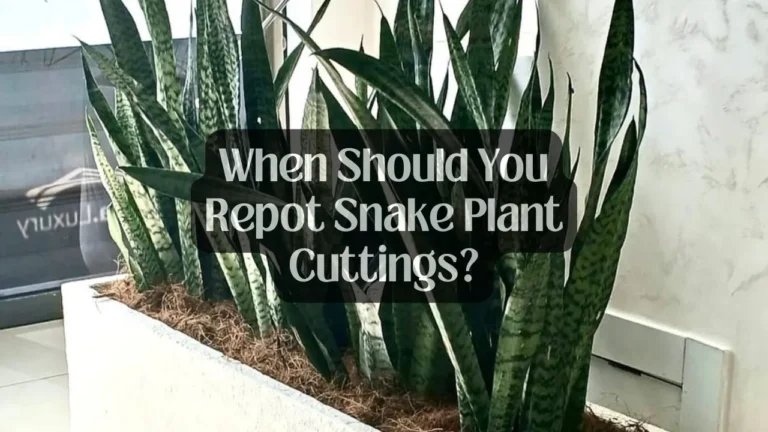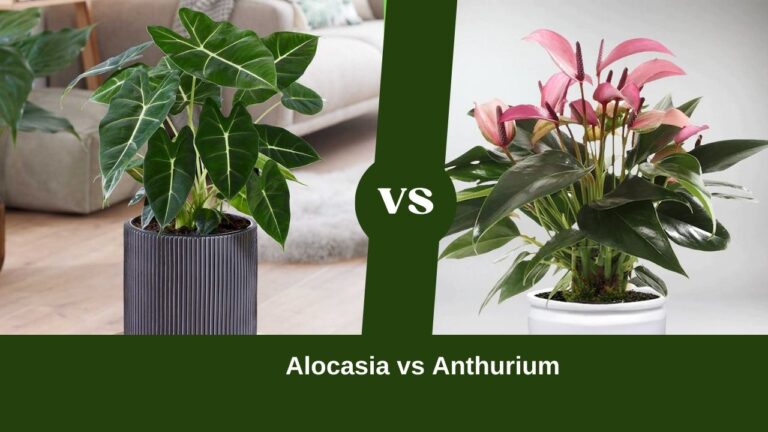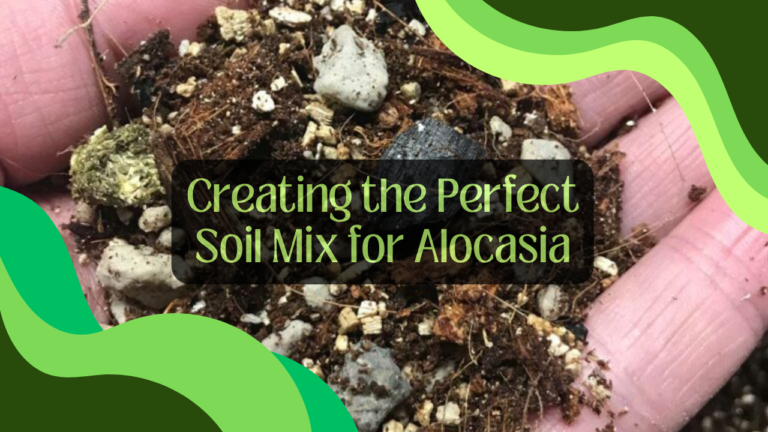Alocasia Wentii Care: The Only Guide You’ll Ever Need
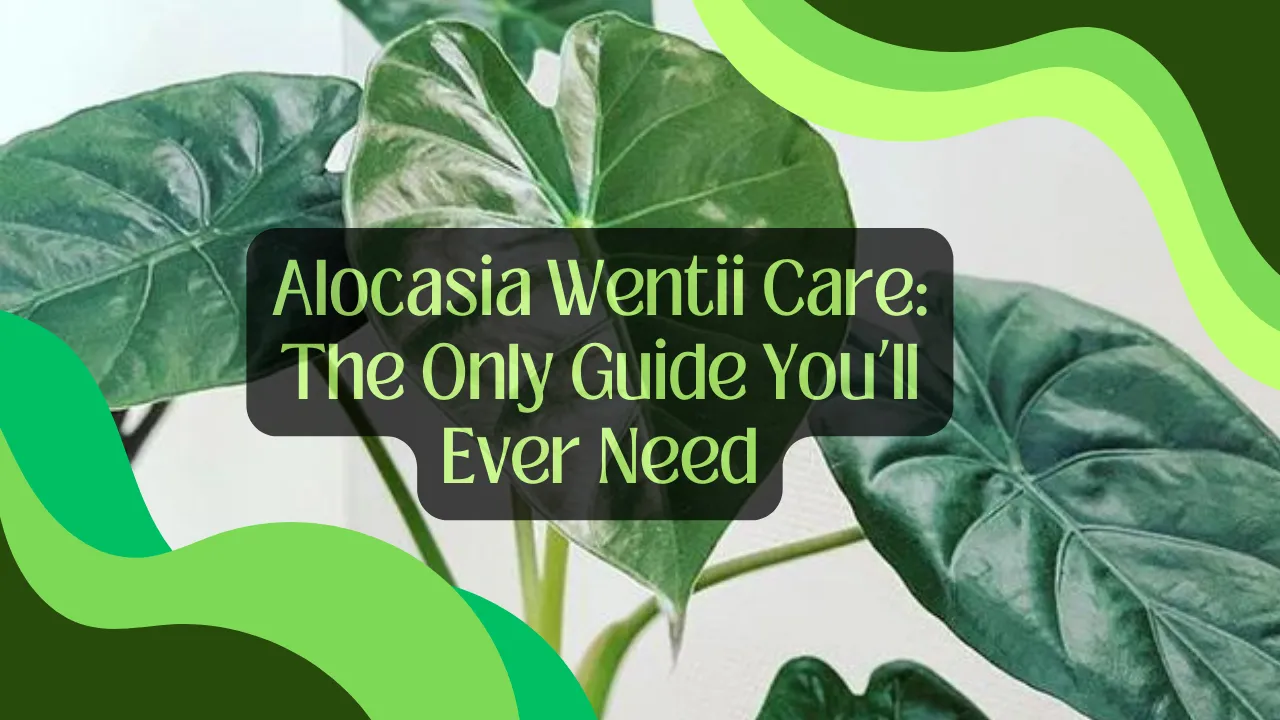
Loving the dramatic flair of the Alocasia Wentii, but worried it might be too high-maintenance! Fear not! This stunning plant with its giant, velvety leaves is actually easier to care for than you think.
But how to care for this plant? For your Alocasia Wentii to thrive, give it bright but not direct sunlight to avoid leaf damage. Keep its soil moist, watering when the top inch dries out to avoid both over and under-watering. Aim for high humidity, around 60% or more.
With the right care, your Alocasia Wentii will thrive and grow faster! Want to hear a step-by-step guide? Let’s dive in!
Quick Overview of the Alocasia Wentii
Would you love to have this plant in your indoor garden? Have a look at the table of information about Alocasia Wentii, first!
| Description | Details |
| Plant Type | Perennial evergreen herbaceous |
| Foliage | Large, arrow-shaped leaves up to 2 feet long |
| Leaf Colors | Deep green on top, metallic purple underneath |
| Stems/Petioles | Thick, upright, purple |
| Height | Up to 6 feet tall |
| Growth Habit | Clumping, upright |
| Leaf Size | Up to 2 feet long |
| Leaf Shape | Arrow-shaped |
| Leaf Texture | Glossy |
| Leaf Top Color | Deep green |
| Leaf Underside Color | Metallic Purple |
| Stem Color | Purple |
| Notable Features | Dramatic color contrast between leaf surfaces, bold upright form, exotic appearance |
How to Care for Alocasia Wentii? 7 Guides to Grow!
The stunning Alocasia Wentii requires specific care to thrive. Follow these 7 guides to help this gorgeous plant flourish.
#Guide 1. Light Requirements
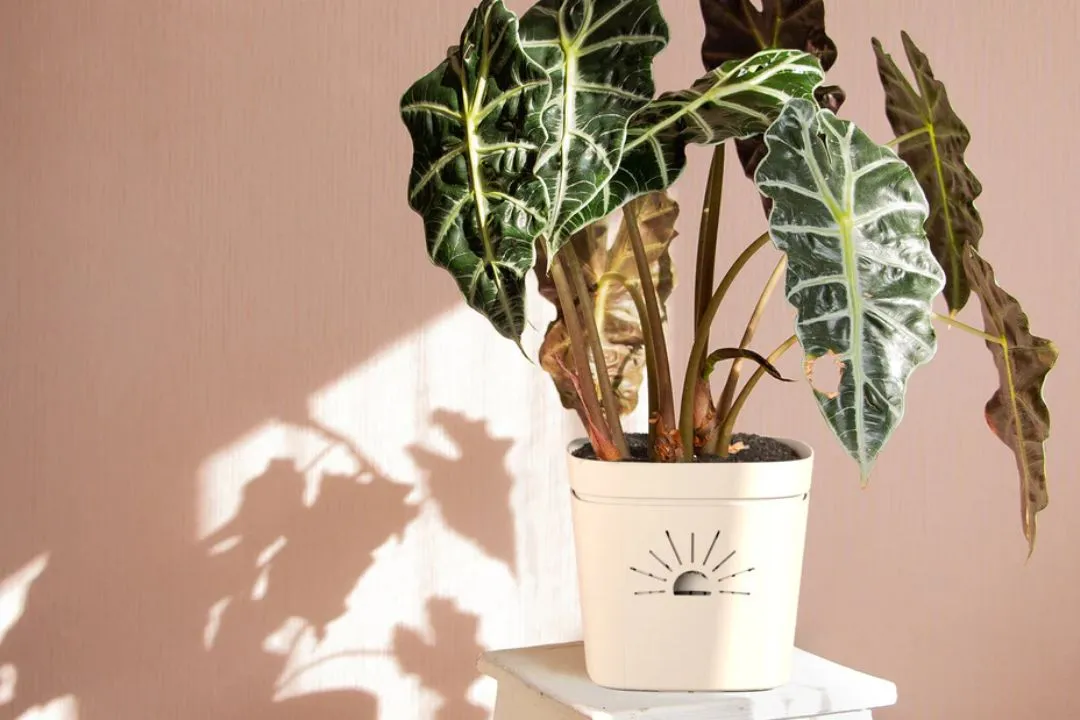
The Alocasia Wentii requires bright, indirect light to thrive. East or west-facing windows are ideal locations that provide the right amount of filtered sunlight. Avoid direct sun exposure which can scorch the leaves.
If the leaves lose their vibrant purple color or appear pale, it’s a sign that more light is needed.
#Guide 2. Watering Needs
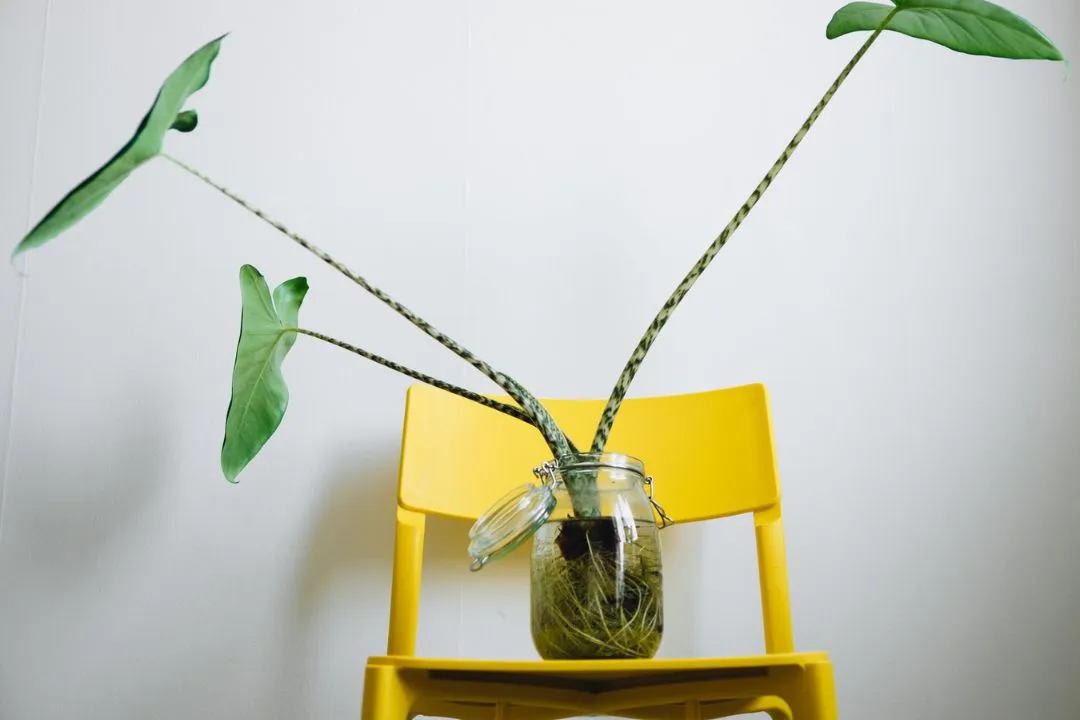
When it comes to watering, keep the soil lightly moist but never soaking wet or completely dry. Water thoroughly when the top inch of soil becomes dry to the touch.
Signs of underwatering include –
- Wilting
- Crispy leaves
- While overwatering leads to yellowing foliage and
- Root rot.
Maintaining proper soil moisture is crucial.
#Guide 3. Temperature and Humidity
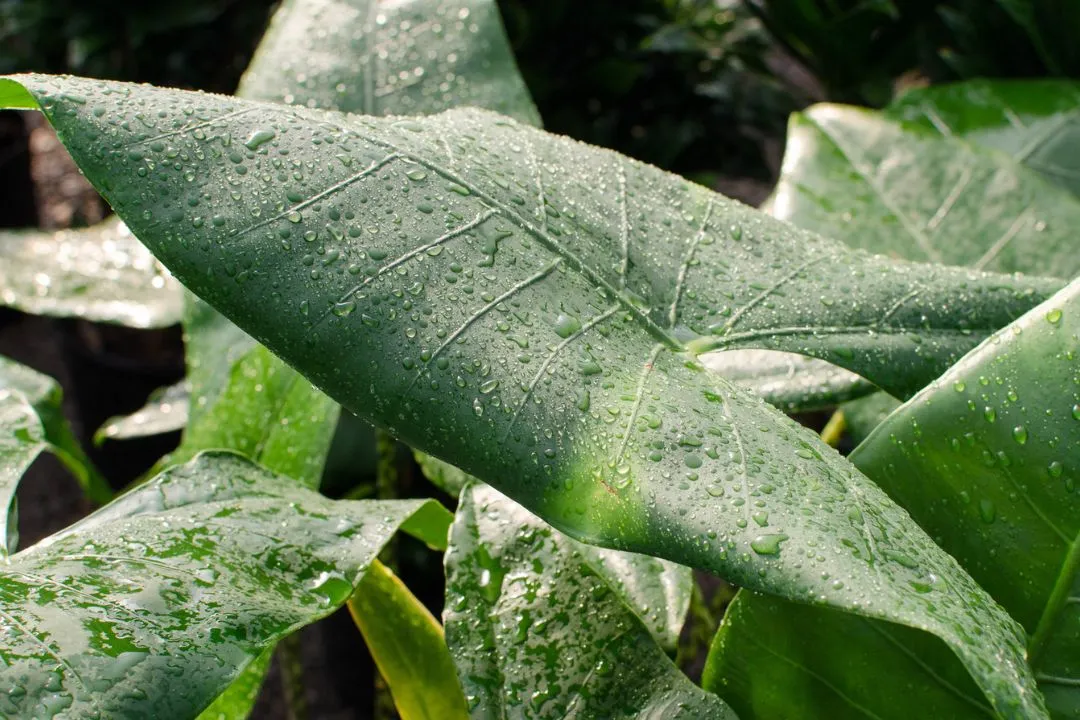
This tropical plant flourishes in warm temperatures between 65°F to 85°F. Also, ensure it has high humidity levels of 60% or above.
Use a pebble tray or humidifier to increase humidity around the plant. Cold drafts should be avoided as they can damage the delicate leaves.
Provide the warm, humid conditions that mimic its native environment.
#Guide 4. Soil and Potting

For soil and potting, use a well-draining mix made up of components like peat moss, perlite, and bark. Ensure the pot has adequate drainage holes to prevent soggy soil.
Repot every 2-3 years in spring, choosing a new pot 2-3 inches wider than the previous one. Be sure the soil becomes refreshed.
#Guide 5. Fertilizing
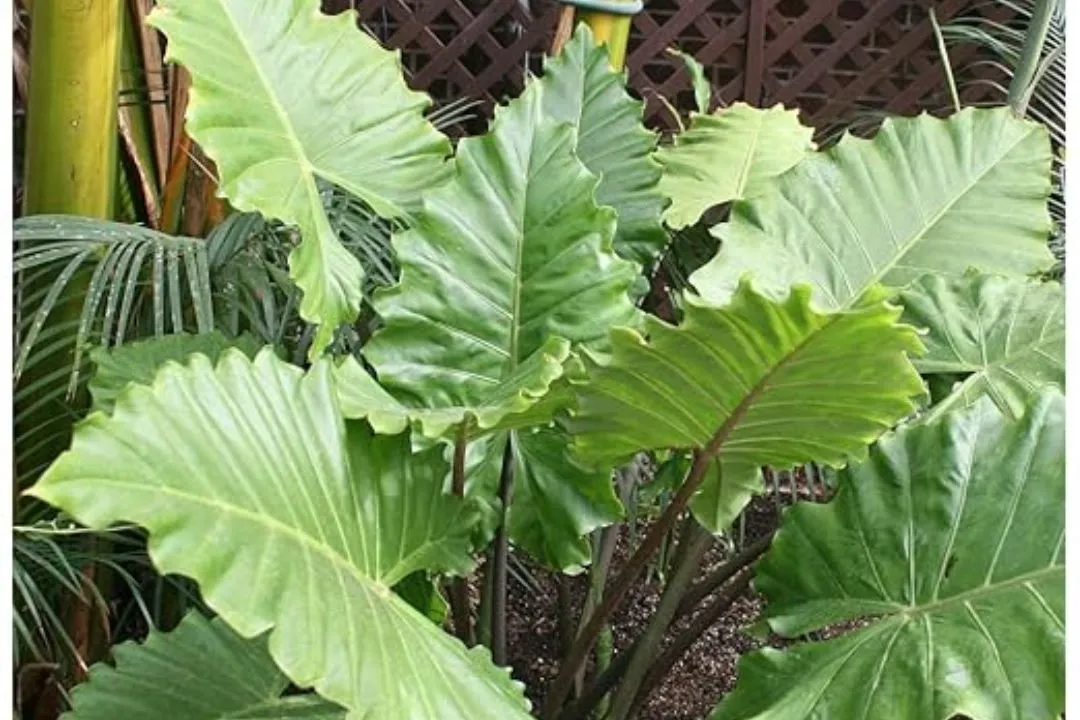
Feed your Alocasia Wentii monthly during the spring and summer months. It must be with a balanced liquid fertilizer diluted to half strength.
Avoid fertilizing in fall and winter when growth naturally slows down. Signs of nutrient deficiency include stunted growth and pale leaves.
#Guide 6. Pruning and Grooming

Regular pruning and grooming are important. Remove any yellow, dead, or damaged leaves using sharp, sterilized pruners or scissors. Wipe the leaves periodically with a damp cloth to remove dust buildup.
Proper grooming maintains the plant’s attractive, tidy appearance.
Guide 7. Propagation

You can propagate the Alocasia Wentii through division in spring or by taking stem cuttings. When repotting, carefully divide the root ball, ensuring each division has sufficient roots.
For stem cuttings, use sterile pruners on a healthy stem section and plant in moist soil.
Have a look at the following video for more care updates about Alocasi Wentii.
5 Common Problems and Solutions When Growing Alocasia Wentii
like any plant, can encounter issues. Let me address the common Alocasia problem and let’s grow by fixing –
Yellowing Leaves
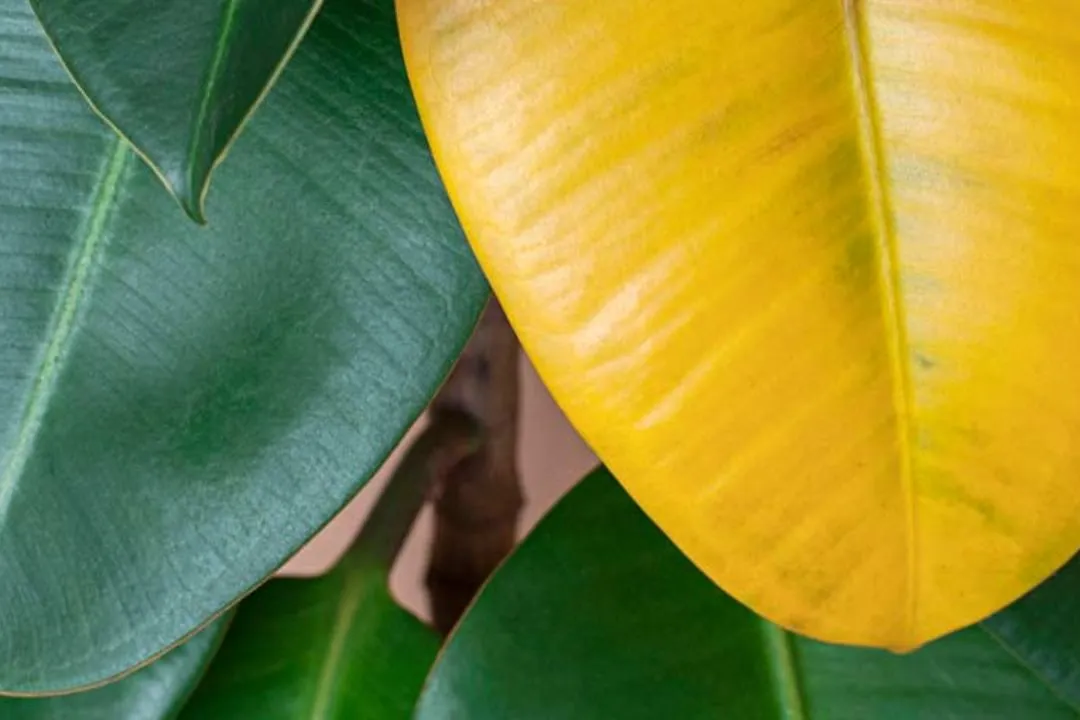
- Cause: Incorrect watering, either over or underwatering.
- Solution: Check soil moisture regularly, ensuring it’s slightly moist but not waterlogged. Water thoroughly when the soil surface dries out, and avoid leaving the plant in standing water.
Brown Leaf Tips
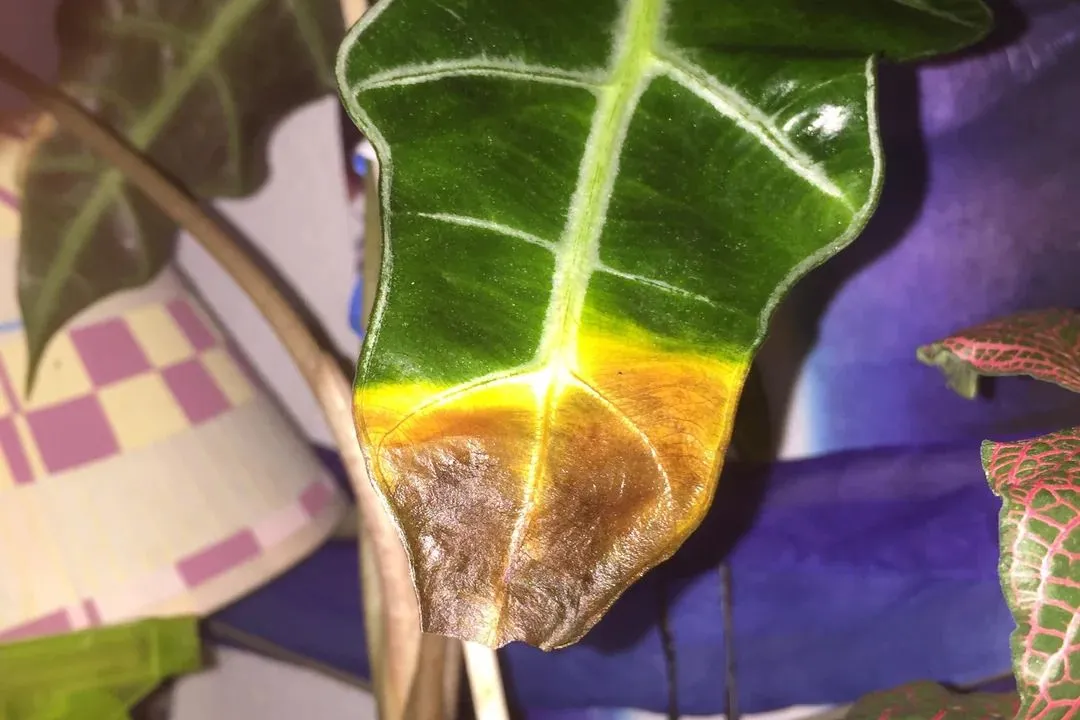
- Cause: Low humidity, leading to dry air and browned leaf edges.
- Solution: Increase humidity by grouping plants, using a pebble tray, or employing a humidifier near the plant.
Drooping Leaves
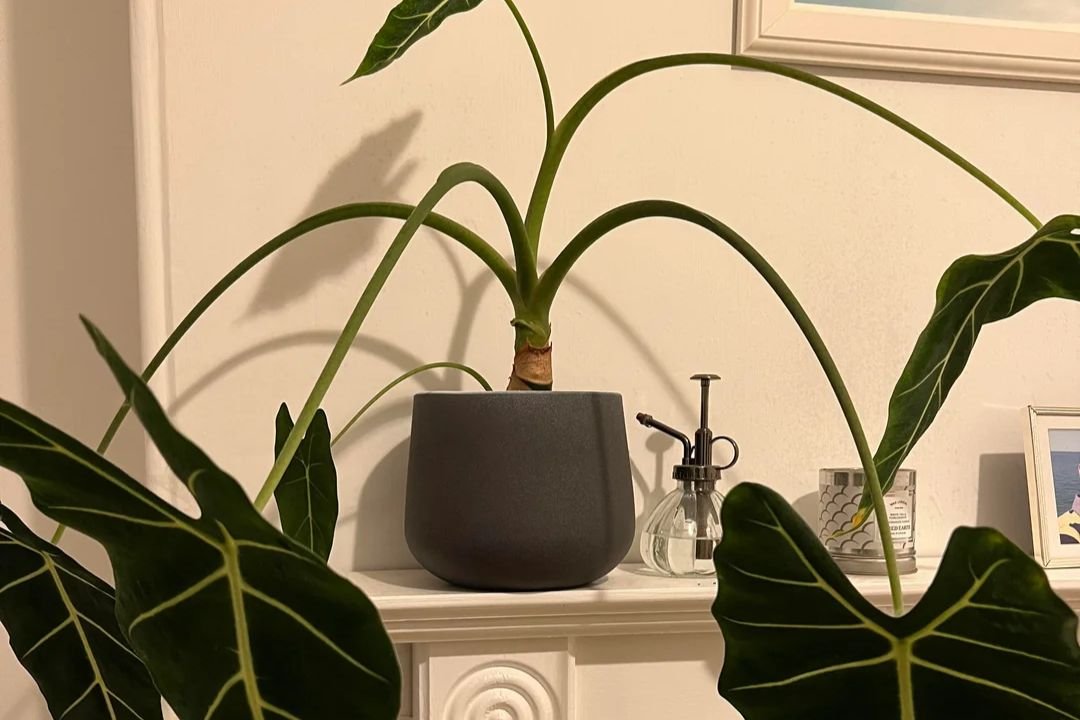
- Cause: Under or overwatering, or inadequate light.
- Solution: Monitor soil moisture and adjust watering accordingly. If light is insufficient, relocate the plant to a brighter spot.
Pest Infestation
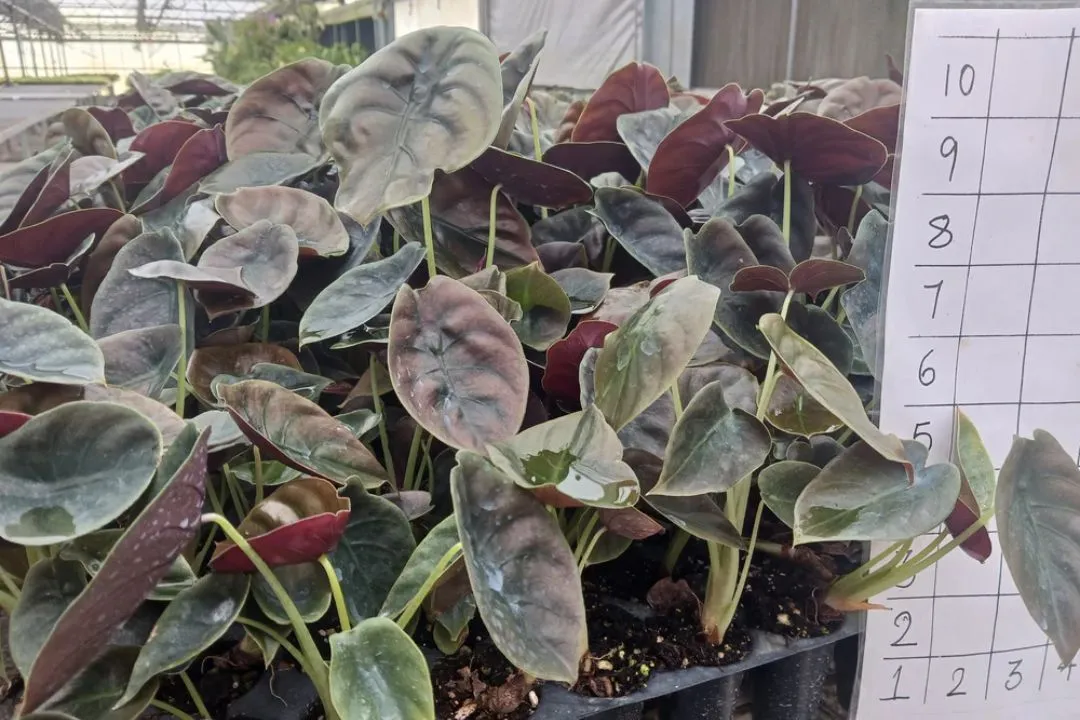
- Cause: Susceptibility to pests like mealybugs, spider mites, and aphids.
- Solution: Regularly inspect the plant for pests and treat it with insecticidal soap or neem oil if infestation occurs.
Lack of New Growth
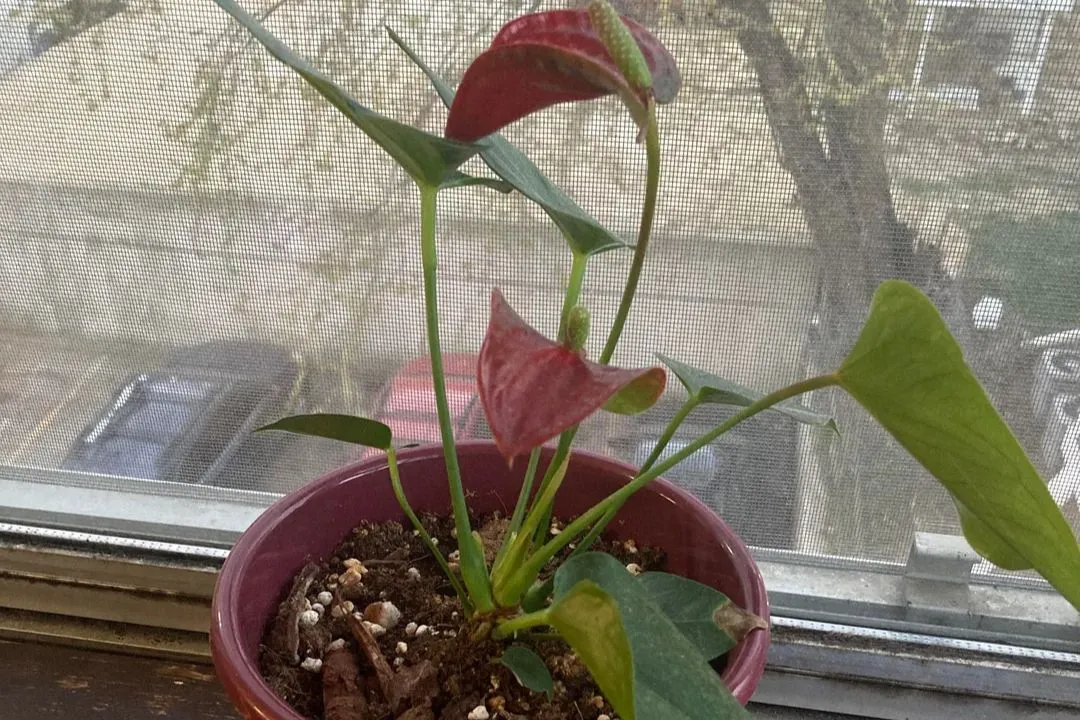
- Cause: Insufficient light, nutrients, or root-bound conditions.
- Solution: Ensure adequate light exposure, fertilize monthly during the growing season, and repot into a larger container with fresh soil if root-bound.
Why You Should Grow Alocasia Wentii and Why You Should Not?
About to get this jungle gem in your house? Know the good and bad about Alocasia Wentii. Decide before you find anything that makes you upset! Get the plant you’ll love from each and every side.
Why You Should Grow Alocasia Wentii?
- Alocasia Wentii features large, velvety leaves that add a tropical touch to any space.
- Alocasia Wentii is fairly low-maintenance.
- This plant helps clean indoor air by removing common toxins and pollutants.
- Once settled, Alocasia Wentii regularly produces new growth.
Why You Should Not Want to Grow Alocasia Wentii?
- Alocasia Wentii prefers bright, indirect light. Too much direct sun can harm it.
- Thriving in humid conditions, Alocasia Wentii struggles in dry environments.
- Like many aroids, Alocasia Wentii is toxic if ingested by pets or humans.
- During winter, Alocasia Wentii enters dormancy, shedding some leaves.
FAQs
Check out the following Q&A section to learn more about Alocasia Wentii.
Q: My Alocasia Wentii’s leaves have brown tips. What’s wrong?
A: Brown leaf tips are often a sign of low humidity. Increase humidity around your plant using a pebble tray, humidifier, or grouping plants together.
Q: My Alocasia Wentii is drooping. Why?
A: Drooping leaves can be caused by underwatering, overwatering, or lack of light. Check the soil moisture and adjust your watering routine. If watering isn’t the issue, try moving the plant to a brighter location.
Q: My Alocasia Wentii isn’t flowering. Is that normal?
A: While Alocasia Wentii can flower, it’s not very common indoors. The flowers are pale and short-lived. Don’t worry if yours doesn’t flower – it’s all about the stunning foliage!
Final Word
Want to see Alocasia Wentii standing tall with its oversized leaves? Just give it some bright, indirect sunlight, keep the air a bit humid, and make sure it’s in soil that drains well. As for watering, simply wait for the top layer of soil to dry out. And don’t forget to add a bit of fertilizer every month.
With a little bit of TLC, this beauty will flourish for sure! So, if you’re after a plant that’s easy to care for, the Alocasia Wentii is the way to go. Just be careful about the concerning points I mentioned.

